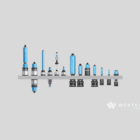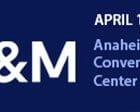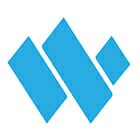May 2024
At Westfall Technik, we’re always looking for ways to move faster, act smarter, and create more value—for our customers and our organization. One of the ways we’ve done that is by taking a hard look at a process that often gets overlooked: procurement.
Procurement is traditionally thought of as a necessary back-office function—slow, siloed, and reactive. But what if it could be something more? What if procurement could be disciplined, predictive, strategic—and even a source of competitive advantage?
That’s where Predictive Procurement Orchestration, or PPO, comes in.
From Fragmented to Future-Focused
Westfall has grown quickly over the past few years, bringing together more than 15 injection molding and mold-building companies under one roof. With that growth came complexity—different ERP systems, varying procurement practices, and a wide range of direct and indirect spend categories.
Take resins, for example. We buy tens of millions of pounds of more than 100 different plastic resins annually. Each of our facilities had their own way of sourcing, pricing, and negotiating. It was clear we needed a smarter, more unified way to approach procurement.
So, we started exploring new technologies—ones that could help us predict outcomes, speed up sourcing cycles, and eliminate the “cost of delay” that can come from long, drawn-out negotiations.
That search led us to PPO.
What Is PPO and Why Does It Matter?
Predictive Procurement Orchestration is exactly what it sounds like: a platform that uses data science, AI, and behavioral economics to help companies predict supplier pricing, orchestrate the bidding process, and arrive at better decisions—faster.
We partnered with Arkestro, a leading PPO provider, to pilot the approach. The results were immediate. In just 72 hours, we sourced laptops for the entire company—saving time, money, and effort in the process. From there, we expanded to strategic materials like resins and began integrating PPO into our broader sourcing strategy.
What makes PPO unique is that it flips the traditional RFQ process. Instead of asking suppliers to “give us your best price,” we start with a data-backed offer informed by real-time market conditions. This “anchoring effect” draws from game theory and has been shown to accelerate negotiations while increasing transparency.
Data-Powered. Supplier-Centric. Enterprise-Ready.
One of the myths about modern procurement is that faster always means cheaper—but not necessarily better. At Westfall, we’ve found that PPO helps us strike the right balance between speed, savings, and supplier relationships.
The process is clear and efficient. Bidders receive a suggested price and can respond in up to three rounds. They get instant feedback about how their quote compares—not just to others, but to what our model predicted. That means suppliers can focus their offers, reduce manual entry, and make strategic decisions about what business to pursue.
Better yet, they trust the process. We’ve heard repeatedly from suppliers that PPO increases transparency, reduces friction, and removes the guesswork of traditional negotiations. And because we’re not just chasing the lowest price—but rather, the best total value—it builds stronger partnerships over time.
Where We’re Headed
We’re still just scratching the surface. Right now, PPO is live across our resins and some indirect categories like IT. But our goal is to bring this approach to every corner of our procurement activity. Whether it’s a high-volume commodity or a complex single-source situation, we want to know: How would this perform through PPO?
We’re also working on integrating the platform into our ERP systems, allowing more of our team to access data-driven recommendations directly in their workflows. Control towers and personalized dashboards will help make procurement intelligence available in real time, without adding extra steps.
A Smarter Way to Buy
In a fast-moving industry like ours, speed and insight are essential. PPO helps Westfall deliver both.
It’s not just about saving money (though we do). It’s about making better decisions, faster—and with more clarity. It’s about aligning procurement with the way we run the rest of the business: with transparency, intelligence, and intention.
And as AI, orchestration platforms, and digital procurement tools continue to evolve, we’re confident that PPO will help us lead the way—not follow.
References
Holman Enterprises (Automotive): Achieved a 7% savings in one day using PPO to consolidate and streamline sourcing across 40 suppliers marketplace.procurementleaders.com+2arkestro.com+2marketplace.procurementleaders.com+2
Arkestro Platform Metrics: Customers often realize 18.8% savings per $1M spend via predictive procurement arkestro.com+11arkestro.com+11arkestro.com+11
ProcureCon CPO Report (2025): Shows 94% of procurement leaders plan to use or are already using generative AI weekly procurecondm.wbresearch.com+9icertis.com+9linkedin.com+9
AI Agent Adoption (Icertis Report): 90% of procurement leaders intend to adopt AI agents in 2025 arkestro.com+15businesswire.com+15konnecthouse.com+15
Arkestro Pharma/BASF Case: Multi-billion-dollar pharma diverted weeks‑long negotiations into under two weeks, with significant multi‑million savings
Further Reading
Why You Should Adopt Predictive Procurement Now – Arkestro deep dive on AI‑driven sourcing benefits marketplace.procurementleaders.com+11arkestro.com+11arkestro.com+11
How Predictive Procurement Unlocks Savings in 60 Days – Arkestro insights on rapid deployment and impact konnecthouse.com+12arkestro.com+12arkestro.com+12
The Three Ps of Predictive Procurement – Arkestro framework on predictive, proactive, and performance‑driven buying arkestro.com+6arkestro.com+6arkestro.com+6
Elevating Procurement: Autonomous Tech & Innovation – Overview of emerging orchestration platforms arkestro.com
ProcureCon CPO Report (2025) – Downloadable executive insights on procurement transformation procurecondm.wbresearch.com+9procureability.com+9icertis.com+9
















